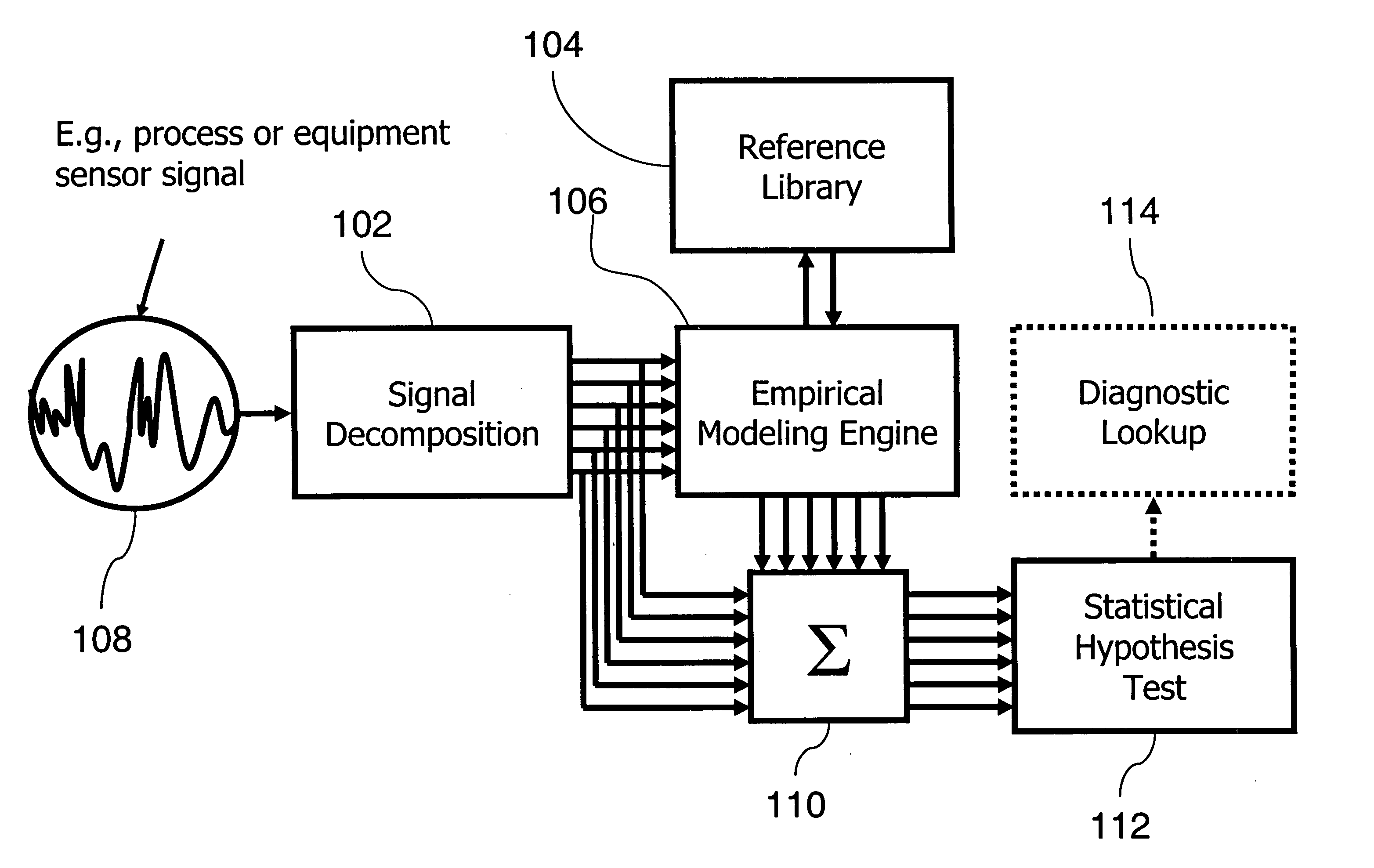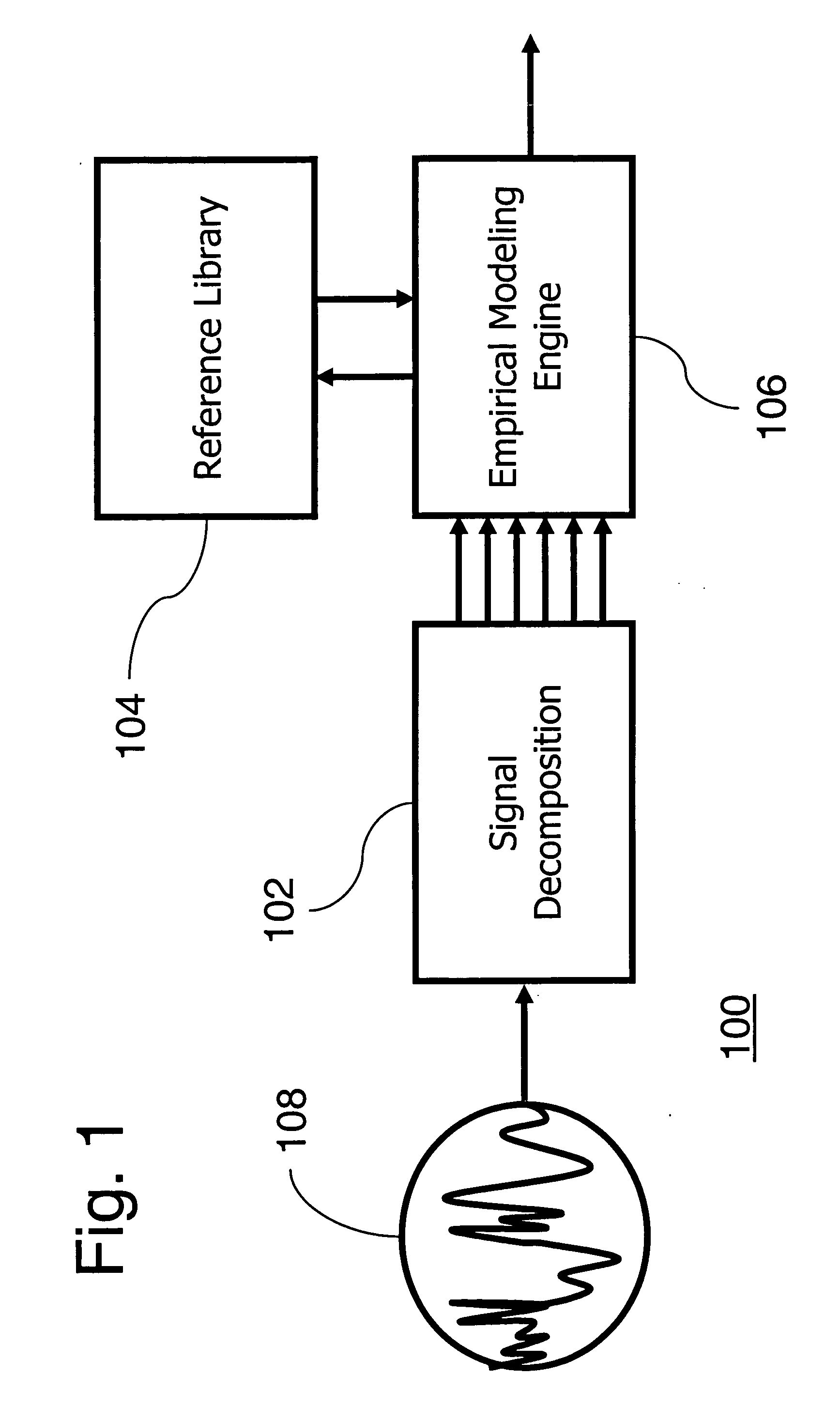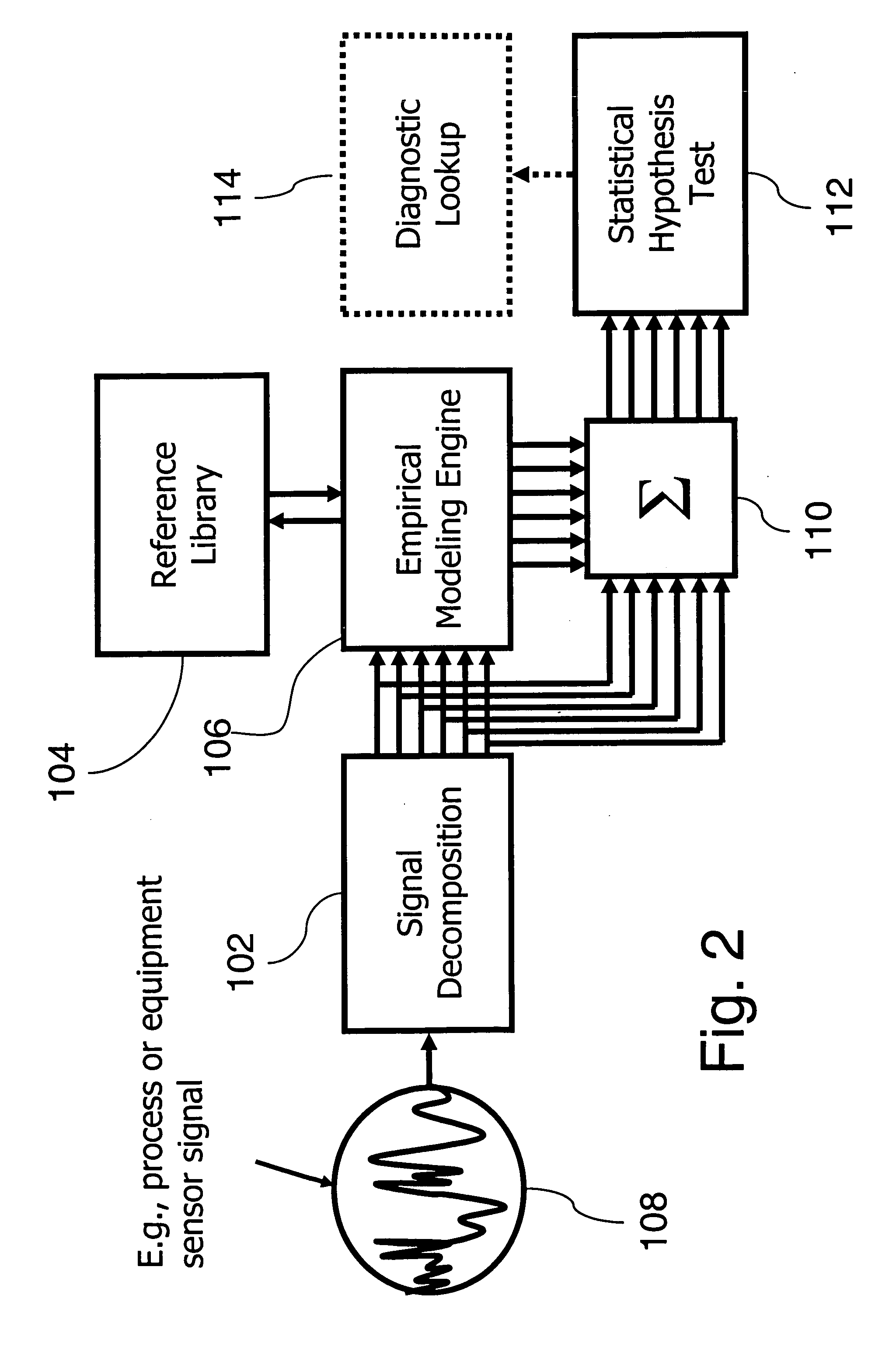Complex signal decomposition and modeling
a complex signal and signal technology, applied in the field of complex signal decomposition and modeling, can solve the problems of inability to extract the data encoded therein using prior art techniques, unsatisfactory operating conditions, and different types of signals can suffer from attenuation and interference, and achieve the effect of greater range and accuracy
- Summary
- Abstract
- Description
- Claims
- Application Information
AI Technical Summary
Benefits of technology
Problems solved by technology
Method used
Image
Examples
Embodiment Construction
[0023] Turning now to the drawings and, more particularly, FIG. 1 generally shows the preferred embodiment signal decomposition and modeling system 100 of the present invention, which generally includes a signal receiver 108, a signal decomposition module 102, a reference library 104 and an empirical modeling engine 106. Signal receiver 108 serves to provide the complex signal to the signal decomposition module 102, which converts the signal to a plurality of correlated component signals. Empirical modeling engine 106 is disposed to receive the plurality of inputs, and with reference to a set of data embodying classification information or known operational information stored in reference library 104, output an indication about the complex signal and the system it is drawn from.
[0024] System 100 has application to any complex signal, whether naturally occurring, derived from a system, system operation or a process being carried out in a system or otherwise generated, naturally or a...
PUM
 Login to View More
Login to View More Abstract
Description
Claims
Application Information
 Login to View More
Login to View More - R&D
- Intellectual Property
- Life Sciences
- Materials
- Tech Scout
- Unparalleled Data Quality
- Higher Quality Content
- 60% Fewer Hallucinations
Browse by: Latest US Patents, China's latest patents, Technical Efficacy Thesaurus, Application Domain, Technology Topic, Popular Technical Reports.
© 2025 PatSnap. All rights reserved.Legal|Privacy policy|Modern Slavery Act Transparency Statement|Sitemap|About US| Contact US: help@patsnap.com



